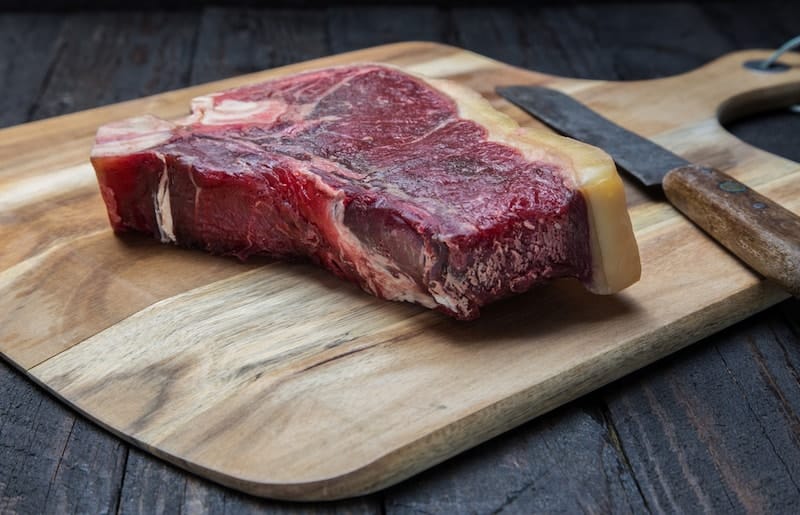What Is Dry-Aged Beef?

We’re sure you have heard of dry-aged steak – you might have even seen it on the menu at your favourite steak restaurant. But do you know what it is? Lots of people don’t, so we thought we’d create this post to clear up the mystery!
Avid steak lovers, cooks and butchers alike will all tell you that dry-aged beef tastes better than fresh beef. Dry-aged beef is a highly sought-after product, and because only high-quality meat can be properly dry-aged (as the process requires meat with a large and evenly distributed fat content), it is seldom available outside of steak restaurants, butcher shops and upscale supermarkets.
So… What Is Dry-Aged Beef?
All meat products require some sort of ageing treatment so that they can safely be stored until their purchase. Often, this treatment is ‘wet ageing’, in which meat is vacuum sealed in its own juices. However, there is also the more highly-regarded ‘dry-ageing’, which involved the drying and dehydration of beef in a constant, controlled environment.
How Does Dry Ageing Work?
The dry-ageing process changes beef in two ways. First, the beef’s moisture evaporates, which results in a rich and concentrated beef flavour. Second, the beef’s natural enzymes break down the connective tissue in the muscle, which increases the tenderness of the meat. The dry-ageing process also causes a certain fungus crust to grow on the outside of the beef, much like the rind you see on aged cheese. This crust is removed before the meat is consumed, but it helps to tenderise the beef and make it more flavoursome.
Dry-aged beef is preserved for 7-120 days before being eaten. The longer the meat is dry-aged, the better the results will be; however, the most common time frame is 30 days. The meat doesn’t go bad because it is aged in controlled conditions that prevent the growth of bacteria. Dry-aged meat is more expensive than regular meat, because it tastes better, and the process takes a long time and requires specialised temperature, humidity, and air-flow controlled refrigerators.
And… that’s about it! We hope this post has enlightened you to what dry-aged beef is. Give it a try next time you see it on a menu, and don’t forget to peruse our beef steak products!



